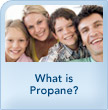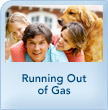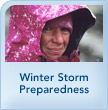Safety Tips
Pilot Outage
If the pilot is out:
- Do not attempt to relight the pilot
- Immediately turn off the gas supply at the tank
- Contact McMahan's Bottle Gas
When you call McMahan's Bottle Gas, we will check our office records for the date of your last delivery. If it is possible you could be out of gas, we will dispatch a delivery truck to refill your tank. We will bubble test all fittings and appliance connections, pressure test the system and relight all pilots.
It is our policy to inform you at the time of your call as to any possible charges related to out-of-gas situations, special trip charges or service charges.
Inside Gas Leaks
All gas leaks are serious and take priority over any other service work. When you call to report a gas leak, please be prepared to provide:
- Your name
- Location of the installation
- Your cell phone number or a neighbor's phone number where you can be reached once you have vacated the building
- As much information as possible regarding the leak so that the service person can be properly prepared to fix the problem, such as:
- Can you hear the gas leaking?
- Is odor just in one room or all over the building?
- Are appliance pilots still burning?
- What gas appliances are in the building?
When the gas leak is inside of a building, remember to:
- Immediately turn off the gas supply at the tank
- NOT turn light switches on or off
- Open all windows and doors
- Stay out of the building and contact McMahan's Bottle Gas
Outside Gas Leaks
All gas leaks are serious and take priority over any other service work. When you call to report a gas leak, please be prepared to provide:
- Your name
- Location of the installation
- Your cell phone number or a neighbor's phone number where you can be reached
- As much information as possible regarding the leak so that the service person can be properly prepared to fix the problem, such as:
- Can you hear the gas leaking?
- Can you locate the source of the leak?
When the gas leak is outside of a building, remember to:
- Immediately turn off the gas supply at the tank
- Stay away from the area until a McMahan's Bottle Gas service person arrives
- If the leak is at the tank relief valve, stay away from the tank.
Carbon Monoxide
Carbon Monoxide is an odorless, colorless, toxic, flammable gas that can be deadly. Suspected carbon monoxide situations should always be considered dangerous and require immediate attention. Exposure to carbon monoxide may cause a poisoning that can result in disorientation, confusion, sleepiness, fainting and possible death. Symptoms of carbon monoxide include:
- Headache
- Nausea
- Fatigue
- Dizziness
- Eye Irritation
- Irregular Breathing
- Other Flu-Like Symptons
When you call to report the suspected presence of carbon monoxide, please be prepared to provide:
- Your name
- Location of the installation
- Your cell phone number or a neighbor's phone number where you can be reached
- As much information as possible regarding the reason for suspecting the presence of carbon monoxide
If you suspect the presence of carbon monoxide, remember to:
- Leave the building immediately
- NOT turn light switches on or off
- Open all windows and doors
- Immediately turn off the gas supply at the tank
- Contact McMahan's Bottle Gas and the local fire department
General Tank Considerations
Propane gas is a safe, environmentally friendly fuel that offers significant value to end-users when compared to other fuels. There are however, some general considerations that need to be recognized when installing propane tanks.
Propane tanks that are 325, 500 or 1,000 gallon capacity must be at least ten feet from any door, window, opening, building or property line and a minimum of ten feet from any source of ignition or combustible materials.
Propane tanks that are 120 gallon capacity must be at least three feet from any door, window, opening or property line and a minimum of ten feet from any source of ignition or combustible materials. It is allowable to position these tanks next to a building.
Propane tanks that are smaller than 120 gallon capacity must be at least three feet from any door, window, opening or property line and a minimum of five feet from any source of ignition or combustible materials.
Propane Properties
| BTU Per Gallon | 91,547 |
| BTU Per Cubic Foot | 2,516 |
| BTU Per Pound | 21,591 |
| Pounds Per Gallon | 4.24 |
| Cubic Feet Per Gallon | 36.39 |
| Cubic Feet Per Pound | 8.58 |
| Specific Gravity of Vapor | 1.52 |
| Specific Gravity of Liquid | 0.509 |
| Boiling Point in Degrees F | -44 |
| Ignition Temperature | 920 - 1020 Degrees F |
Interactive Safety Modules






















